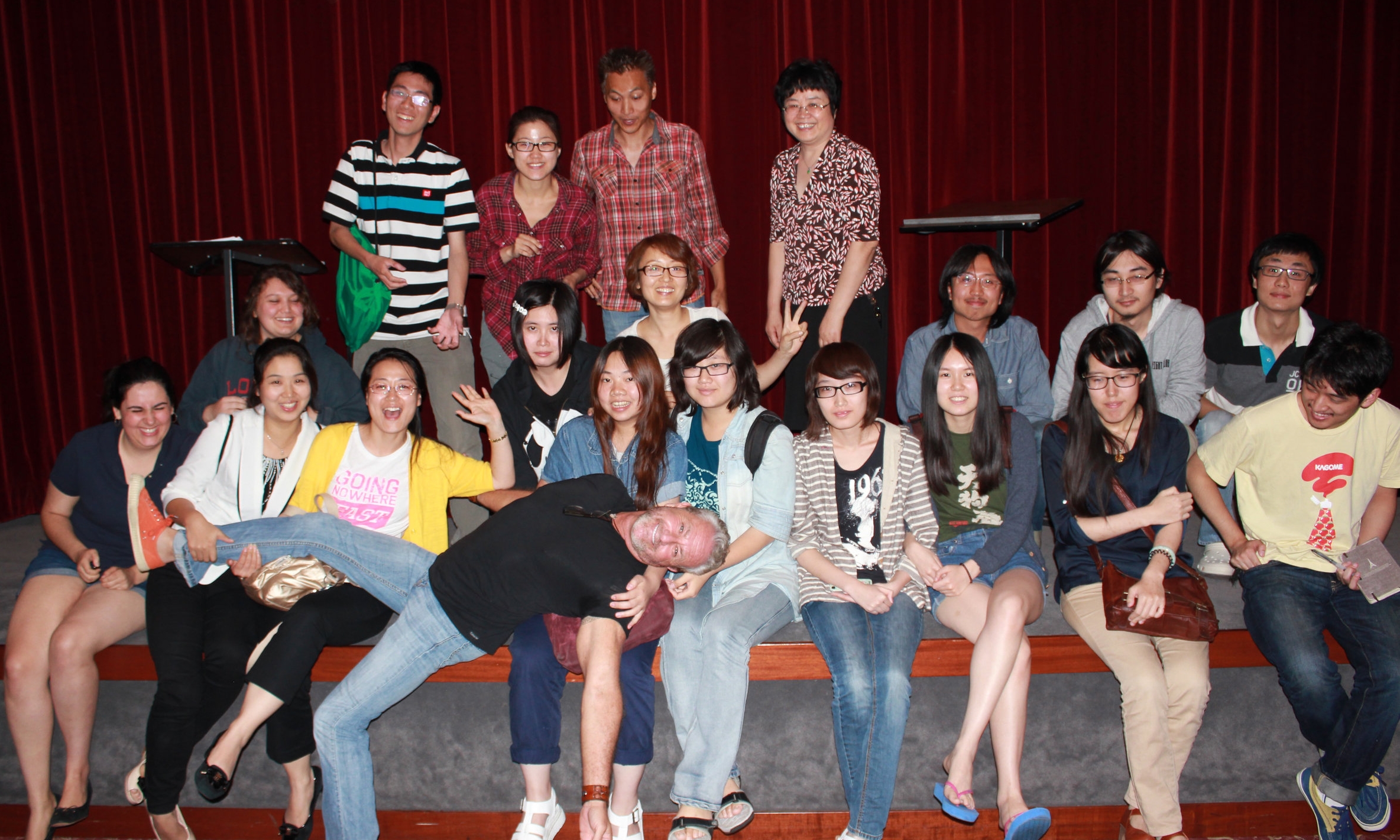I've had the following item since I was a toddler (I can't give an exact date, but I can say that it was well worn)...
My guess is that my parents bought the album for me after my first trip to Disneyland in 1973.
That's me in middle with the golden vest.
If you're just joining my blog, this list is about seemingly ordinary objects that have special significance to my career in animation. So it goes without saying that this Disneyland album was one of the many inspirations for me as a child. I listened to this album ad nauseam while staring at the simple, yet intricate, designs of Mary Blair on the cover. It fed by cartoon obsession when it wasn't Saturday morning.
The thing that I didn't expect was that I would one day sing for the man who directed this amazing album: Paul Salamunovich.
Paul Salamunovich conducted choral music on the scores for more than 100 films and TV projects, including Francis Ford Coppola’s The Godfather (1972) and Bram Stoker's Dracula (1992). His work also can be heard on Flatliners (1990), First Knight (1995), Air Force One (1997), A.I. Artificial Intelligence(2001), The Sum of All Fears (2002), Peter Pan (2003), Angels and Demons (2009), and on the NBC drama ER.
With the choir at St. Charles Borromeo, he recorded five albums of sacred music and was featured on Andy Williams’ 1969 recording of “Battle Hymn of the Republic.”
Salamunovich sang on the soundtracks of such films as Judgment at Nuremberg (1961), How the West Was Won (1962) and The Trouble With Angels (1966). His musical contributions spanned the spectrum from classical, pop, and jazz to folk and new age music with such diverse artists as Stan Kenton, Liz Story and Cirque de Soleil.
Salamunovich guest-conducted throughout the world and prepared choirs for such notable conductors as Igor Stravinsky, Robert Shaw, Bruno Walter, Eugene Ormandy, Alfred Wallenstein, Georg Solti, Zubin Mehta, Carlo Maria Giulini, Valery Gergiev, and Simon Rattle.
But even though he was a world renowned maestro, I was first introduced to him as Paul Salamunovich: choir director for Loyola Marymount University.
1990 LMU Yearbook Photo, 2nd row, 2nd to last
For me, animation is all about timing. Having said that, music is an integral part of understanding timing. You need to understand the life that's in music if you want to bring life into any character. It's like finding the heart in a performance. It's an intangible that you need to experience in order to find. Animation is often about taking your drawings and creating moments. There's a certain rhythm to life and, if you miss it, you miss the moment. In fact, Chuck Jones often used musical bar sheets to time out his animation.
Through studying music under Paul, I also learned the subtleties of interpretation. In 1990, we were one of four men's choirs invited from the United States to participate in The Pacific International Festival of Male Choirs in Vancouver. It was an international festival where some of the greatest choirs in the world gathered to perform.
I'm in the 3rd row, fourth from the left.
Before we went onstage, we sat backstage and listened to another choir perform "The Battle Hymn Of The Republic." It was the exact same arrangement we were planning to perform, but you could tell there was a definite difference in interpretation of the text. The tempo was slightly slower, the intensity of the singers wasn't evident, and the richness in their sound wasn't very deep. I don't say that to be pompous (God knows that our choir wasn't great because of my singing), but because Paul knew how to interpret music on a page.
Battle Hymn Of The Republic (You can click on the link and listen to our recording.)
*Credit also has to be given to our pianist, the legendary Bob Hunter. The above arrangement was so complicated that the other choir had to bring in a second accompanist to handle it. Bob did it all by himself.
Through the LMU choirs, I learned how to listen. I mean really listen. There's subtleties in balance, tone, and pitch that I never would have discovered had it not been for my choral training. By showing me when to breathe and why, how to phrase a sentence, how to dramatically tell a story, and the importance of balance in a group's dynamics, Paul taught me how to go from being a kid to becoming a world class performer.
Obviously, it took some time getting there.
So the next time you're on "It's A Small World" at Disneyland, rather than sit there and complain about how the song keeps going on and on, just shut up, look at all the beautiful designs, and listen. Once you appreciate all the countless hours of work and talent that went into making the ride, you can leave and work out your issues at The Radiator Springs Racers at California Adventure because that thing is awesome! (Just make sure you get a Fast Pass early.)












